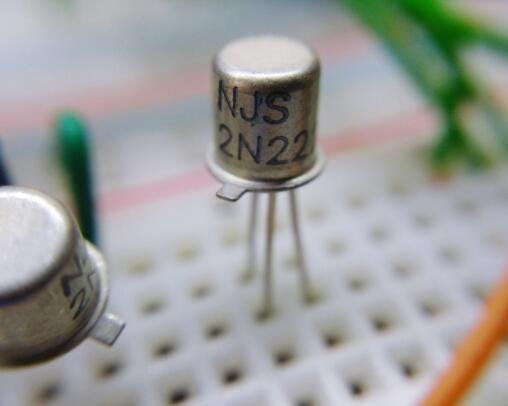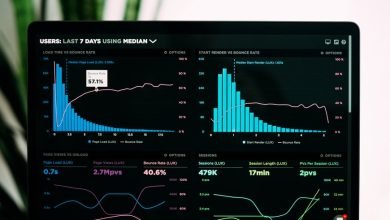
Introduction to Transistor Region Characteristics
Introduction
A semiconductor transistor is used to amplify, control, and generate electrical signals and power. It is a variable current switch capable of controlling the output current based on the input voltage. Unlike ordinary mechanical switches, transistors use electrical signals to control their own opening and closing with fast switching speed. How does it do that? What are the characteristics of transistor region?
1 Transistor Electrons and Holes
The transistor is a current-type control device. It is similar in function to the field effect transistor (FET). While it has the functions of signal amplification, oscillation and modulation.
A transistor has three poles, three regions, and two PN junctions. Observing the structure of it helps to understand how it works.

Figure 1. Transistor Structure
Movement of Charge Carriers

Figure 2. Movement of Charge Carriers
1) The hollow in the figure is positively for holes, and the solid ones are negatively for electrons. Some people say how can holes move? That is due to the recombination of electron movement and hole. It is easy to understand from the macroscopic point of view as the hole is moving.
2) The emitter process has high concentration. So when the emitter junction is forward bias, emitting a large amount of electrons.
3) The concentration of many electrons in the P region of the base is holes. It is low and very thin. When the electrons from the emitter junction come over, there is little recombination with the base here. 00resulting in the base current IB, and receving most of the electrons. The electric field force will drift to the collector.
4) The collector has a large area, which helps to collect the electrons from the emitter, called the collector. The purpose is to collect electrons to generate a large current, which forms an amplification effect on the base current.
Diffusion motion forms emitter current IE, recombination motion forms base current IB, and drift motion forms collector current IC, where IE=IC+IB.
2 Transistor Characteristics
1) IB controls IC.
The direction of the transistor arrow is the current direction.
The NPN type current direction is B->E, the PNP type current is E->B, that is, the current controls the current, and the small current IB controls the large current IC.
2) The transistor has an amplifying function.
The current flowing on IB is very small. If the current flowing on IB is 1mA, the current on IC is twice that of IB. And the current on IC is 90~100 times that of IB, that is 100mA.
3) For the NPN tube, when the e pole is grounded, the transistor is saturated and turned on. When the PNP transistor as a switch, the e pole should connect to the power supply. And the c pole should connect to the load.
4) When IB>1mA, Vbe=0.7V, the triode is completely on and plays a switching role, Vbe>=0.7V => IC tends to infinity. If Vbe<0.7v, the transistor is not fully on, and Vce has a large voltage drop. That is, Rce is large.
Note
When designing switching circuits with transistors, there are two design methods:
Selecting the PNP-type, when the power supply connects to the e pole, and the load connects to the c pole.
Selecting the NPN-type, when the power supply connects to the c pole, and the e pole connects to GND.
However, the PNP-type method requires another NPN type transistor to cooperate, which increases the cost. Generally, the NPN type is good. The power supply connects to the c pole, and the e pole connects to the GND.
3 Three Transistor Regions
Cut-off Region, Active Region, Saturation Region

Figure 3. Transistor Circuit And Operational Regions
The transistor is too common in hardware design, but it is not so simple to understand its characteristics. The cut-off region and the active region in the curve below are easier to understand. While you can’t understand the saturation region by looking at the graph, otherwise it will be very confusing.
(1) Cut-off Region
Simply speaking, the transistor is not on, Ube< turn-on voltage, generally less than 0.5V or 0.7V, at this time IB=0, IC=Iceo≈0.
(2) Active Region
When VBB gradually increases, VBB>Uon and VBB>=UBE, the emitter junction is forward bias and the collector junction is reverse bias. From a microscopic point of view, the emitter junction is on, resulting in the diffusion of a large number of electrons, a small part of the base recombining, and most of the electrons are collected by the collector junction under the action of the electric field force (the collector junction is reverse biased), forming a β times larger current of the IB. (The emitter concentration is high and the collector junction area is large, so the process is determined), that is, the current amplification effect. At this time, the transistor is working in an enlarged state, because the collector’s ability to collect electrons is very abundant, and IB increases, then more electrons can be together, resulting in IC being β times that of IB.
(3) Saturation Region
When VBB continues to increase to a certain extent, since VCC remains unchanged, IC increases, and the voltage on RC increases, UCE will naturally decrease. When UCE<UBE, the collector junction is forward biased, and the collector collects electrons. The ability of the electric field will decrease (some people are very puzzled here, it is obviously on the wrong side, but it is sure that UCE>0, in this way, the electrons will still move from the emitter to the collector. In addition, the movement is mainly diffusion movement and drift movement. The drift movement suppresses, but the electron concentration from the emitter is high, and the diffusion movement will continue). When IB continues to increase normally, IC cannot increase by β-fold, and it appears that IC has reached “saturation”, that is, it cannot continue to increase.
For the collector voltage, take calculation according to the formula Uce=VCC-βIb. As Ib increases, Uce will decrease, so that Ube>Uce, that is, the collector junction is forward biased.
The cut-off region and saturation region are common in embedded to realize the function of “switch”. When the transistor is in the cut-off region, the “switch” is on, Uce≈VCC, and when the transistor is in the saturation region, the “switch” is off, Uce≈ 0V. The drive transistor switches between the cut-off area and the saturation area, requiring the CPU to output a pulse signal, only high and low levels, not analog signals.
(4) Example Analysis
This is a simplified diagram of a typical common emitter connection.

Figure 4. Voltage Characteristic
1) When the UI is relatively small and the turn-on voltage is small, then IC=0, RC does not divide the voltage, and UO=VCC.
2) When UI continues to increase and reaches the turn-on voltage, IB will increase uniformly, IC=β*IB will also increase uniformly, the partial pressure on RC will increase uniformly, and UO=VCC-URC, UO will decrease uniformly.
3) When UI continues to increase, IB continues to increase, IC also increases, and the partial pressure of RC also increases, causing UC to decrease until it approaches 0, the ability of the collector to collect electrons is insufficient, and the transistor reaches saturation. In the analog circuit, try to make the circuit work in the magnified area, the linear area in the above figure.
4 Input and Output Characteristics
4.1 Input Characteristics

Figure 5. Input Characteristic
When UCE=0, it is equivalent to the direct connection between the collector and the emitter (equivalent to two PN junctions in parallel), so the input characteristic of iB is the volt-ampere characteristic of the PN junction.
When the UCE increases, it is equivalent to the enhancement of the ability of the collector C to collect electrons, that is, the IC increases, and because the IE doesn’t change (as mentioned above, the IE exists due to the diffusion of the high concentration of polytrons), IE=IC+IB, Therefore, IB decreases. Therefore, when the UBE is the same, the larger the UCE, the smaller the IB, you can see it in the graph as the curve shifts to the right.
When UCE increases to a certain extent, it can already collect most of the electrons. Increasing UCE will not greatly increase the number of electrons, so IC does not increase, IB does not decrease, and the curve does not shift to the right. Therefore, for low-power tubes, an input characteristic curve with UCE greater than 1V can be tested as a representative.
4.2 Output Characteristics

Figure 6. Output Characteristic
1) When the control IB doesn’t change, a curve is making, and multiple IBs have multiple curves.
2) Look at IB, when the UCE increases, it means that the collector’s ability to collect electrons increases, and the IC must increase. The picture shows the saturation area. Many people here do not understand why the saturation is first, and then the amplification. This picture is not a chronological picture, do not use chronological order to understand. If you want to look at time, when the input voltage UBE increases, the output voltage UCE is the normal time sequence from large to small, so the graph should look at the horizontal axis in reverse, and you can see that the amplification area is first, and then the saturation is taking.
5 Saturation and Cutoff Distortions
5.1 Waveform Analysis of Basic Common Emitter Amplifier Circuit
Look at transistor region, UCE is the output voltage UO, and the change of UCE changes up and down at the static operating point UCEQ (when IB changes dynamically).

Figure 7. Waveform Analysis of Common-emitter Amplifier Circuit
1) When saturating distortion, it is due to the increase of IB, the increase of RC partial pressure and the decrease of UCE. According to the output characteristics, UCE is small, and excessive transmission but insufficient collection, so it enters saturation distortion, reflecting bottom distortion, IB increases, and UCE is too small and close to 0.
2) When the cut-off distortion occurs, IB decreases, the RC partial pressure decreases and UCE increases. If IB is close to 0, the transmitter junction is not conducting, and IC is also close to 0, then UCE is close to VCC, and cut-off distortion occurs.
5.2 Feasibility and Necessity of Transistor Switch Circuit Design
Feasibility: Anyone who has used a transistor knows that it has a characteristic, that is, it has a saturated state and a cut-off state of its transistor region. It is precisely because of these two states that it is possible to apply it to a switching circuit.
Necessity: Suppose we are designing a system circuit, and some voltages, signals, etc. need to reduce during system operation, but can’t do it mechanically. At this time, they can only be processed by software, which requires a switching circuit as a basis.
6 Transistor Switch Circuits
6.1 Basic Switching Circuit of NPN Transistors

Figure 8. Transistor Switch Circuit
The following figure is a basic triode switch circuit. The base of NPN transistor should connect to a resistor (R2) and the collector to a load resistor (R1).
First of all, we need to know that when the base has no current. There is no current in the collector, and the tube is in the off state. When there is current in the base, it will cause the collector to flow a larger current. That is, it enters the saturation state, which is equivalent to off state. Of course, the base must have a voltage input that meets the requirements. Because it is necessary to ensure that the tube enters the cut-off region and the saturation region.
6.2 Basic Switching Circuit of PNP Transistors

Figure 9. Basic Switching Circuit of PNP Transistor
The most commonly used transistors are switching circuits. Here introduces the PNP and NPN transistors below. Let’s talk about the PNP type triode first. The commonly used models are 9012, 8550 and so on. How to use it, as shown below:
FM is a buzzer, 8550 is a PNP type triode, the C terminal is grounded. The B terminal is controlled by the microcontroller, and the E terminal connects to VCC through FM. According to the direction of the arrow, E and B terminals are also high voltage, then E and C are disconnecting. When the B terminal is low voltage, then E and C are directly turned on to realize the function of the switch. Pay attention to: the diode in the direction of the arrow on the triode. As long as the diode is conducting forward, it can be turned on up and down.
Get more info from ARTICLESDO.



